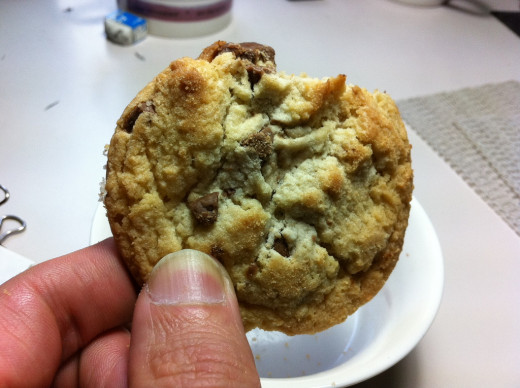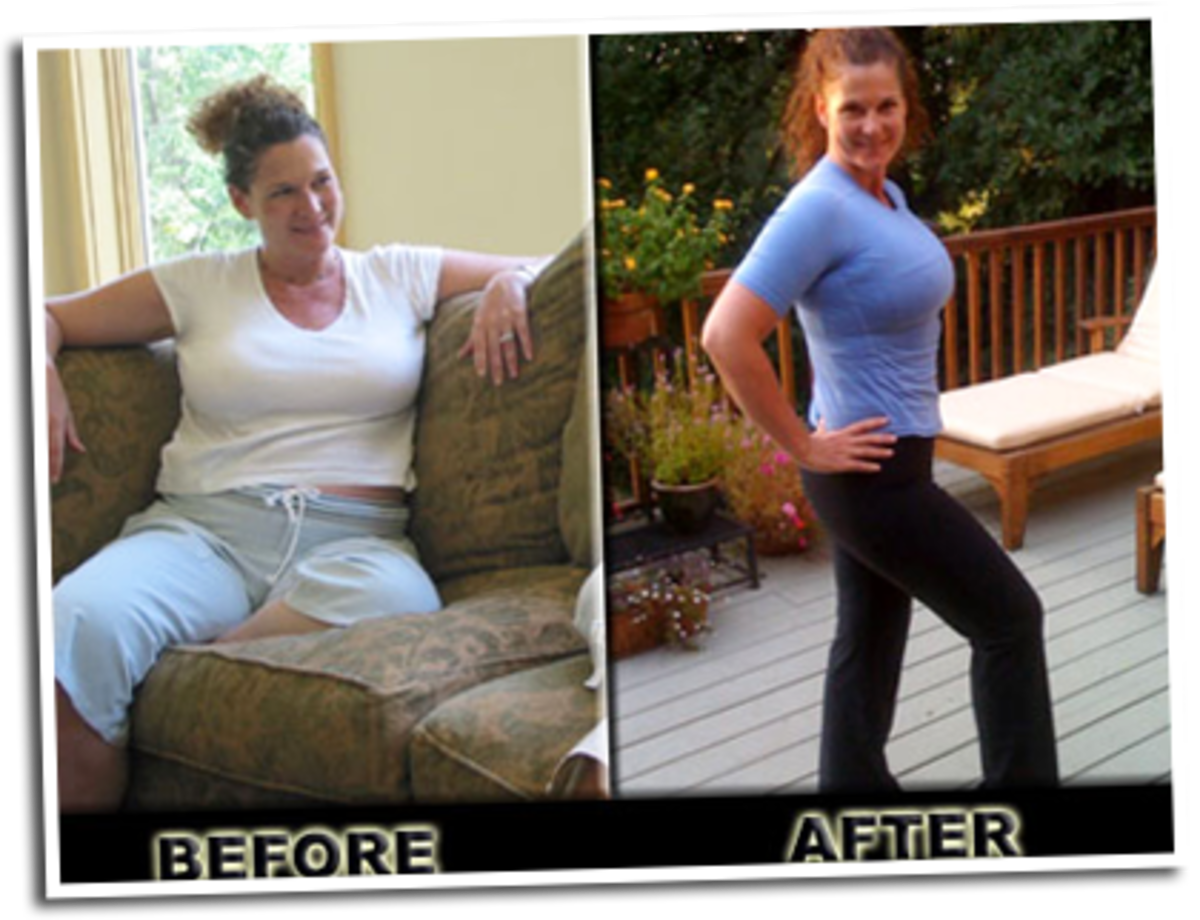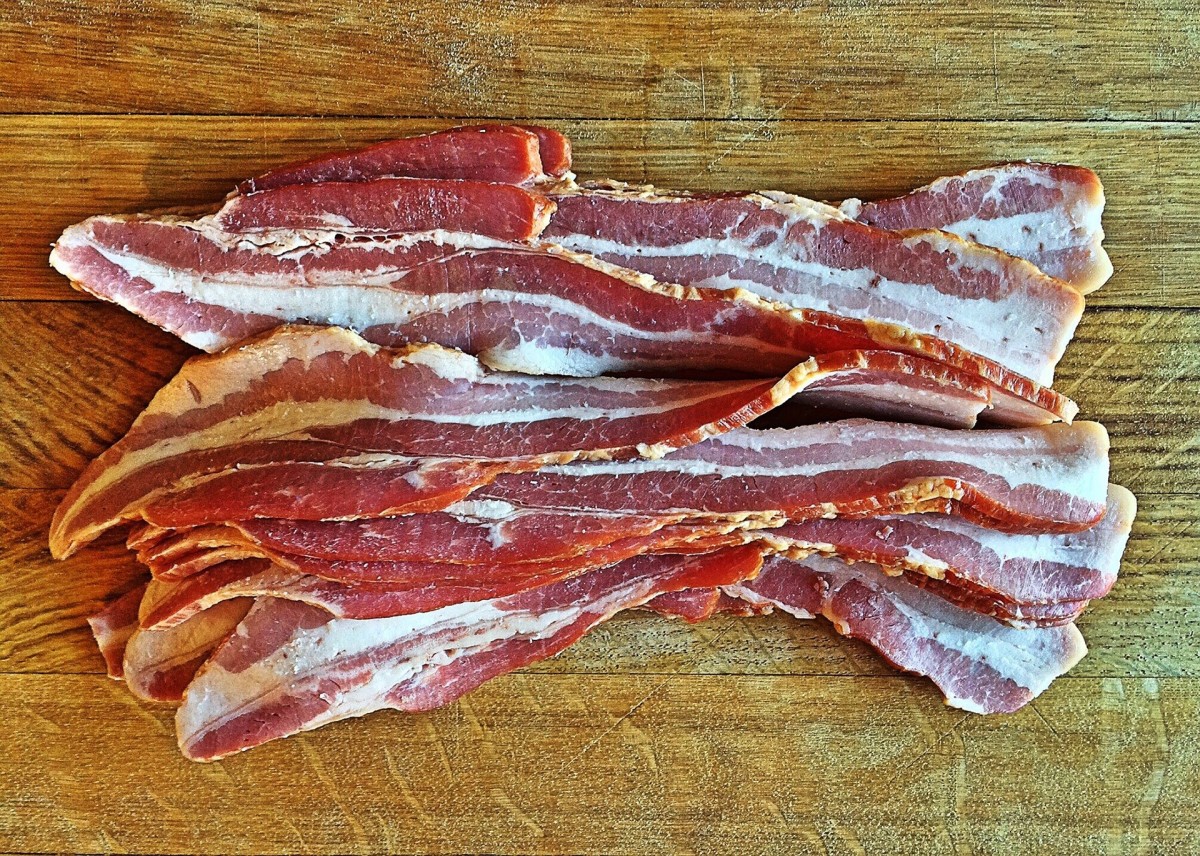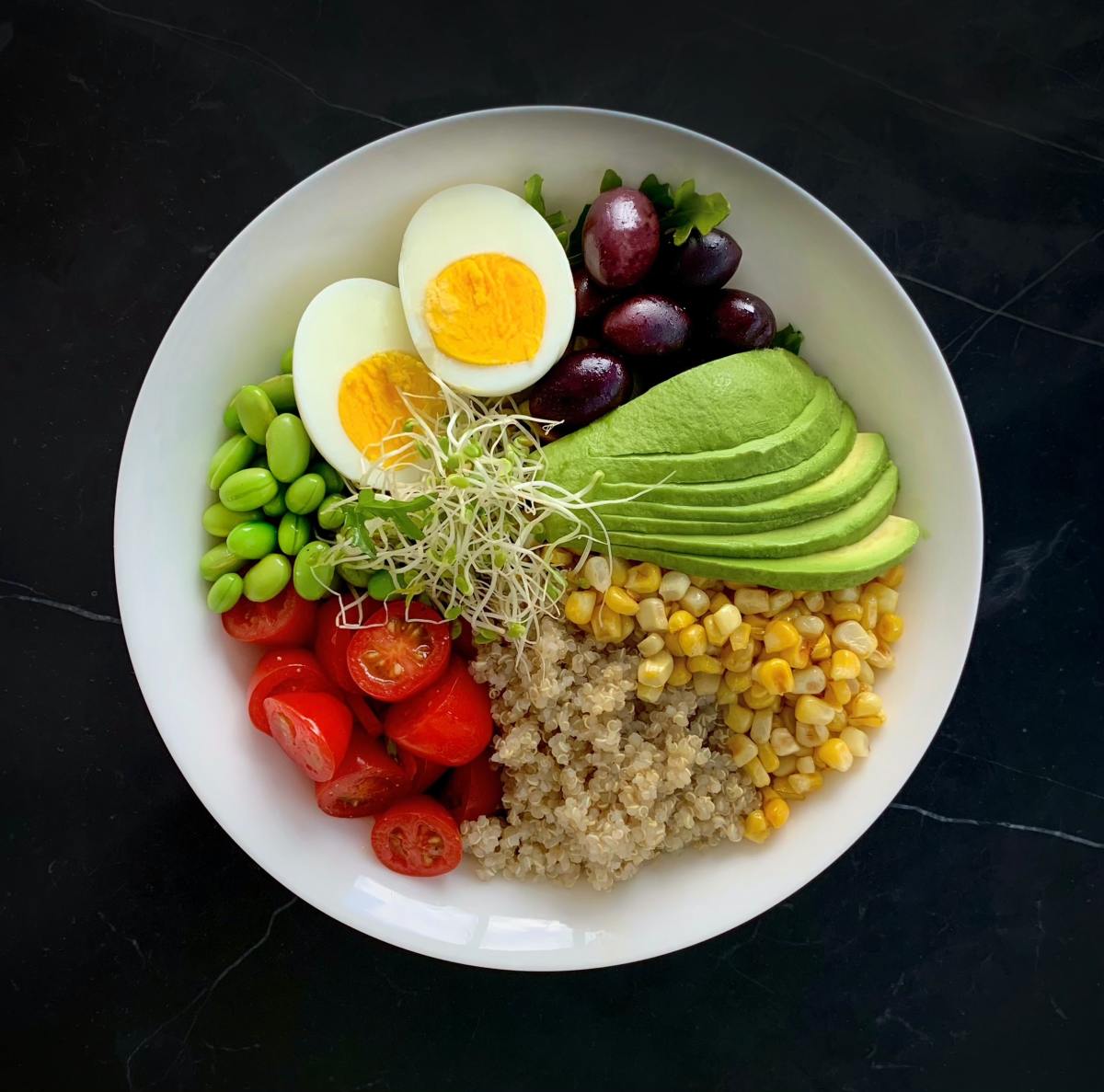Tips on Improving Your Diet
About the Author
Abby Campbell, BSc, SFN, SSN, CPT, is a leading professional fitness and nutrition expert, researcher, and published author of One Size Does NOT Fit All Diet Plan, one of Amazon's Top Gluten-Free and Weight Loss Diets. (You may read more about Abby at the bottom of this article.)

8 Best Diet Tips to Eat Healthy
In this modern age, it's very easy to go with the flow. This is especially true when it comes to eating. Eating is nearly synonomous with pleasure, and we love to indulge with that pleasure when it comes to family, friends, and co-workers at social gatherings and business functions. There's nothing wrong with indulging in a piece of birthday cake in celebration of your niece or nephew. Nor is there anything wrong with having a hot dog at the family reunion. However, too many indulgences can make the weight creep on quickly. The next thing you know, your doctor is telling you that your body mass index (BMI) is too high, that you're borderline obese, and that you're risking your health to diabetes or possibly heart disease. But, where do you begin to make healthy changes to your diet?
A healthy diet plan doesn't have to be difficult to maintain. It will not only improve your eating habits, but it will provide you with optimal health. It will even allow you indulgences or treats without worry. To get started, just learn the 8 best diet tips to eat healthy and even lose body fat if needed.
POLL
Do you have cravings for unhealthy foods?
Get Abby's Book Today!

Diet Tip #1 on How to Stop Cravings
"I see food, I eat food." This is the mentality of most people and is what has made an overweight and obese society. Research has shown that eating at regular intervals, every two to four waking hours, is important to eliminate or lesson food cravings. Following are some strategies you may incorporate into your diet plan to help you eat at regular intervals
- How do I calculate my total daily meals? Divide your waking hours by two to four to find out how often you should eat. If you are awake 16 hours per day and you want to eat every three hours, divide 16 by three to get your total meals. Your total would be five meals per day. If you want to eat every four hours, divide 16 by four to get four meals per day.
- Do I include snacks as meals? Sure, as long as all "feeding opportunities" are nutritionally balanced.
- How big should my meal be? Do not overstuff yourself. Eat until you are 80 percent full. On a scale of 1 to 10, it should register at about a 7 to 8 to be considered 80 percent.
- What if I'm not hungry? Then skip your meal and try to eat less at your next meal. If you are eating every two to four hours and only until 80 percent full, then you should be hungry at your next meal time.
- What if I missed a meal? No worries! Just get back on track and try to do better the next day.
- Can I eat before bedtime? Yes. If your mealtime falls within that time frame, then eat.

Natural Foods
Protein Sources
- lean beef
- skinless chicken breast
- skinless turkey
- egg whites
- pork tenderloin
- fish
- seafood
- low-fat cottage cheese
- Greek yogurt
- tofu
- tempeh
Vegetables
- green and colorful
Fruits
- all fruit
Starches
- oats
- brown/wild rice
- quinoa
- potatoes
- sweet potatoes
- beans
Fats
- olive oil
- coconut oil
- flax oil
- flax seed
- chia seeds
- walnuts
- avocado
- olives
- fish oil
- Omega-3 supplement
Diet Tip #2 on Learning What Are Healthy Foods
You've probably heard that a calorie is just a calorie and all that matters in maintaining or losing weight is dependent on how many calories you are taking in. Though this is true to an extent, there are many other factors to be considered. The types of food you put into your body also matter for the following reasons:
- Whole foods provide a plethora of nutrients (i.e., vitamins, minerals, and phytonutrients) which ward off disease and provide optimal health.
- Whole foods contain natural fiber through vegetables, fruits, whole grains, tubers, and legumes which contribute to satiety (feeling full) and also help to eliminate cravings.
- Whole foods consume nearly 50 percent more energy when digested than processed foods.1
Diet Tip #3 on Eating Healthy Protein
Protein is a very important nutritional building block and needed for many reasons. It keeps your blood's PH levels balanced, maintains proper hormone levels, and regulates proper fluid balance. It preserves muscle (especially in times of dieting) and is an energy source when there are no carbohydrates available. Your immune system relies on protein for proper function.2 Protein is also beneficial for weight loss. For optimal health, you should have protein at every meal and snack. A serving is approximately the size of your palm. Include protein sources such as lean beef, skinless chicken or turkey, egg whites, pork tenderloin, fish, seafood, low-fat cottage cheese, Greek yogurt, tofu, and tempeh.
Diet Tip #4 on Eating Vegetables and Fruits
Hate you vegetables and fruits? Have you really given them a chance? There are tons to be taste tested, and many can be prepared in a variety of ways to suit your taste buds. Vegetables are the absolute best source of carbohydrates as they provide mega nutrients and antioxidants that you can't get in other food types. By consuming a diet high in vegetables and fruits, you are lowering your risk for chronic diseases such as cancer and cardiovascular disease.3/4 Most days, they will provide your body with enough glucose for a healthy body. In addition, vegetables and fruits will help you lose weight as they are nutrient dense, provide little calories, satiate, eliminate waste and allow for better digestion due to its fiber content, and stabilize blood sugar. Try to get 8 servings of vegetables and two servings of fruit per day. A serving is 1 cup raw or 1/2 cup cooked vegetables and 1/2 cup or 1/2 small fruit.
"When trying to lose body fat, it is best to limit starchy carbohydrates to twice per week after a strenuous workout."
Diet Tip #5 on Eating Whole Grains and Legumes
Refined carbohydrates have become a dietary staple in many cultures, especially in the west. Unfortunately, this has contributed to many chronic diseases such as coronary heart disease, diabetes, and cancer.5/6/7 Though research shows that whole grains protect against coronary heart disease, other studies have shown that whole grains may contribute to insulin sensitivity and type 2 diabetes, especially if eaten in excess.8/9 Recent studies have also shown that all starchy carbohydrates (especially the refined type) are likely to cause metabolic health damage to those who are predominantly sedentary and overweight.10 This is most likely due to the overeating of these foods. Does that mean whole grains are off limits? Not necessarily, but recent research has shown that these gluten foods (i.e., wheat, rye, and barley) are currently causing havoc on physical and mental health due to being genetically modified.11/12 However, you know your body best, so judge for yourself on whether gluten foods are a hindrance to your health.
Nutrient timing of natural starchy carbohydrates is very important. Starchy carbohydrates mostly benefit those who exercise on a regular basis, so include them around your workouts. Try to avoid pre-packaged and processed carbohydrates like pasta, cereal, bread, and snacks like cake, cookies, and potato chips. Instead, include oats, brown and wild rice, quinoa, potatoes, sweet potatoes, and yams.
"Research has shown that Omega-3 fatty acids can heal and prevent heart disease, high cholesterol, high blood pressure, diabetes, cancer, rheumatoid arthritis, osteoporosis, pre-menstrual cramps, macular degeneration and mental disorders and diseases."19
Diet Tip #6 on Eating Omega 3 Fats
Contrary to what you've been told, dietary fat is not your enemy. The "No Fat" or "Low Fat" diet is a diet of the past, though there is some legitimacy to those concepts. During those fads, more and more people were opting for fast foods, as well as pre-packaged, processed, and refined foods. These foods contained "trans" or "hydrogenated" fats which are chemically processed and unnatural, used to preserve foods. Many health risks are a result of these unnatural fats such as cardiovascular disease, Alzheimer's disease, and cancer.13/14/15 Recent research has even proven that trans fats contribute to irritability and aggression.16 Fortunately in recent years, the USDA rules a mandatory declaration in nutrition labeling of trans fats present in foods and supplements for consumer review.17
Natural dietary fats are important18:
- as an energy source.
- in the formation of your cell membranes, brain, and nervous system.
- in the balance of hormones.
- in the promotion of a healthy immune system.
- to keep inflammation low.
However, all natural dietary fats are not created equal. However, they are equally important to your body. There are three main categories of natural fats:
- saturated
- monounsaturated
- polyunsaturated
All three categories are thus broken into sub-categories. For overall health, it is important for you to get a combination of all three major categories of dietary fat with an emphasis on Omega-3 (a form of polyunsaturated) as it has been proven to be the healthiest. Include cold water fish such as salmon, mackerel, halibut, sardines, tuna, and herring in your diet. Other great Omega-3 food sources include scallops, shrimp, tofu, flaxseed, flaxseed oil, chia seeds, and walnuts.
Diet Tip #7 on Healthy Beverages
Do you drink beverages that contain calories? Beverages such as sodas and fruit juices contain a good amount of calories that usually come from sugar. Some sodas may have zero calories but are still processed and contain addicting substances such as high fructose corn syrup and aspartame. One of the best things you can do for your health is to replace these beverages with water, teas, and coffees. In fact, water and green tea are likely the beverages that will give you the best benefits.

Diet Tip #8 on Unhealthy Food Treats
Are you an "all or nothing" when it comes to certain things in life such as eating healthy or exercising? Studies show that when dieters feel deprived, they are more likely to binge on forbidden foods and end up quitting.20 In fact, this in one of the top reasons why most people are not successful with a healthy lifestyle. As long as you are eating healthy foods 80 to 90 percent of the time, enjoy the 10 to 20 percent in the foods you so love that may not be on your healthy diet plan. Having a treat every so often won't hurt you.
Conclusion
Improving your diet is a great step towards a healthy lifestyle. You may also want to include fun ways to exercise and relieve stress for overall health.
POLL
Do you think these tips will help you be more conscious of eating healthy?

Tell Us What You Think
You're reading "Tips on Improving Your Diet" by Abby Campbell. Please leave a comment and tell us what you think below. Then share the article with your family and friends. You may even share on Facebook, Twitter, or Pinterest (buttons to your right).


About the author
Abby Campbell, BSc, SFN, SSN, CPT, is a leading professional fitness and nutrition expert, researcher, and published author. For the past 10 years, she has coached thousands of women locally and online to lose body fat and lead healthy lifestyles. Her clients have lost thousands of pounds, reclaimed health, and call her “Coach No Gimmick.” She is from Northern Virginia but now resides near Charlotte, North Carolina. Abby has been married for 20 years and has three grown daughters, one of which is autistic. She is a 19 year cancer survivor.

Enjoy more of Abby's hubs!
- How to Create a Diet Plan with Food You Actually Lik...
Most maintenance or weight loss plans are a one-size-fits-all plan. Learn how you can create a diet plan with food you actually like that will actually boost your metabolism and be fun to plan. - How to Affordably Eat Well
It is often thought that eating healthy means great expense. Not so! In fact, healthy meals on a budget can actually save your wallet. More than that, it will save your health.

References
[1] Barr, S.B. & Wright, J.C. (2010, July 2). Postprandial Energy Expenditure in Whole-Food and Processed-Food Meals: Implications for Daily Energy Expenditure. Food & Nutrition Research, 54, 5114. doi: 10.3402/fnr.v54.0.5144. Retrieved from http://www.ncbi.nlm.nih.gov/pmc/articles/PMC2897733/pdf/FNR-54-5144.pdf.
[2] Berardi, J. & Andrews, R. (2009). The Macronutrients. International Sports Sciences Association. Nutrition: The Complete Guide (166-175). Carpinteria, CA: International Sports Sciences Association.
[3] Willett, W.C. (2010, April 6). Fruits, Vegetables, and Cancer Prevention: Turmoil in the Produce Section. Journal of the National Cancer Institute, 102(8), 510-511. doi: 10.1093/jnci/djq098. Retrieved from http://jnci.oxfordjournals.org/content/102/8/510.full.pdf.
[4] Ness, A.R. & Powles, J.W. (1997). Fruit and Vegetables, and Cardiovascular Disease: A Review. International Journal of Epidemiology, 26(1), 1-13. doi: 10.1093/jnci/djq098. Retrieved from http://ije.oxfordjournals.org/content/26/1/1.full.pdf.
[5] Liu, S., Willett, W.C. & Stampfer, M.J., et al. (2000, June). A Prospective Study of Dietary Glycemic Load, Carbohydrate Intake, and Risk of Coronary Heart Disease. American Journal of Clinical Nutrition, 71(6), 1455-1461. Retrieved from http://www.ajcn.org/content/71/6/1455.full.pdf.
[6] Gross, L.G., Li, L. & Ford, E.S., et al. (2004, May). Increased Consumption of Refined Carbohydrates and the Epidemic of Type 2 Diabetes in the United States: An Ecologic Assessment. American Journal of Clinical Nutrition, 79(5), 774-779. Retrieved from http://www.ajcn.org/content/79/5/774.full.pdf.
[7] Lajous, M., Boutran-Ruault, M.C. & Fabre, A., et al. (2008, May). Carbohydrates Intake, Glycemic Index, Glycemic Load, and Risk of Post-Menopausal Breast Cancer in a Prospective Study of French Women. American Journal of Clinical Nutrition, 87(5), 1384-1391. Retrieved from http://www.ajcn.org/content/87/5/1384.full.pdf.
[8] Liese, A.D., Roach, A.K. & Sparks, K.C., et al. (2003, November). Whole-Grain Intake and Insulin Sensitivity: The Insulin Resistance Atherosclerosis Study. American Journal of Clinical Nutrition, 78(5), 965-971. Retrieved from http://www.ajcn.org/content/78/5/965.full.pdf.
[9] Meyer, K.A., Kushi, L.H. & Jacobs, D.R., et al. (2000, April). Carbohydrates, Dietary Fiber, and Incident Type 2 Diabetes in Older Women. American Journal of Clinical Nutrition, 71(4), 921-930. Retrieved from http://www.ajcn.org/content/71/4/921.full.pdf.
[10] Hu, F.B. (2010, April 21). Are Refined Carbohydrates Worse Than Saturated Fats? American Journal of Clinical Nutrition, 91(6), 1541-1542. Retrieved from http://www.ajcn.org/content/91/6/1541.full.pdf.
[11] Mayo Clinic. (2009, July 1). Mayo Clinic Study Finds Celiac Disease Four More Times More Common than in 1950s: Undiagnosed Celiac Disease Associated with Nearly Quadrupled Mortality.
[12] Kraft, B.D. & Westman, E.C. (2009, February 26). Schizophrenia, Gluten, and Low-Carbohydrate Ketogenic Diets: A Case Report and Review of the Literature. Nutrition & Metabolism, 6(10). doi: 10.1186/1743-7075-6-10. Retrieved from http://www.nutritionandmetabolism.com/content/pdf/1743-7075-6-10.pdf.
[13] Mozaffarian, D., Katan, M.B. & Ascherio, A., et al. (2006, April 13). Trans Fatty Acids and Cardiovascular Disease. The New England Journal of Medicine, 354, 1601-1613.
[14] Grimm, M.O.W., Rothhaar, T.L. & Grosgen, S., et al. (2011, June 29). Trans Fatty Acids Enhance Amyloidogenic Processing of Alzheimer Amyloid Precursor Protein (APP). The Journal of Nutritional Biochemistry. doi: 10.1016/jnutbio.2011.06.015.
[15] Hu, J., Vecchia, C.L. & de Groh, M., et al. (2011, November). Dietary Trans Fatty Acids and Cancer Risk. European Journal of Cancer Prevention, 20(6), 530-538. doi: 10.1097/CEJ.0b013e328348fbfb.
[16] Golomb, B.A., Evans, M.A. & White, H.L., et al. (2012, January 22). Trans Fat Consumption and Aggression. PLoS ONE, 7(3), e32175. doi: 10.1371/journal.pone.0032175. Retrieved from http://www.plosone.org/article/info%3Adoi%2F10.1371%2Fjournal.pone.0032175.
[17] United States Government Printing Office. (2003, July 11). Food Labeling; Trans Fatty Acids in Nutrition Labeling; Consumer Research to Consider Nutrient Content and Health Claims and Possible Footnote or Disclosure Statements; Final Rule and Proposed Rule. Federal Register, 68(133), 41433-41506. Retrieved from http://www.gpo.gov/fdsys/pkg/FR-2003-07-11/pdf/03-17525.pdf.
[18] Berardi, J. & Andrews, R. (2009). The Micronutrients. International Sports Sciences Association. Nutrition: The Complete Guide (157-165). Carpinteria, CA: International Sports Sciences Association.
[19] University of Maryland Medical Center. (2011, May 10). Omega-3 Fatty Acids. Retrieved from http://www.umm.edu/altmed/articles/omega-3-000316.htm/.
[20] Behar, J. (2011, December 15). Top 20 Reasons Why 95% of All Diets Fail. Retrieved from http://www.mybesthealthportal.net/nutrition/weight-management/top-20-reasons-why-95-of-all-diets-fail.html.







